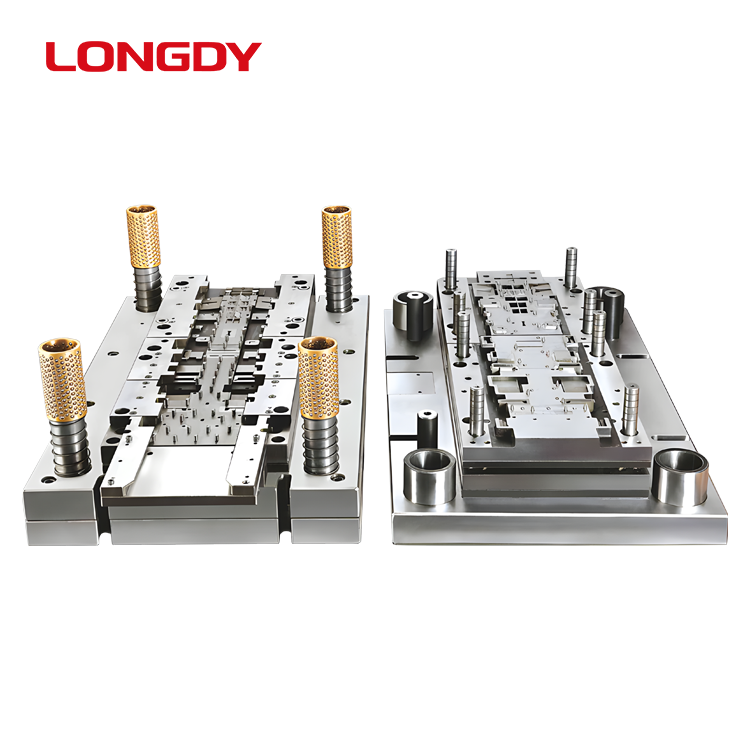

Stamping die is a special process equipment that processes materials (metal or non-metal) into parts (or semi-finished products) in cold stamping processing, called cold stamping die (commonly known as cold stamping die). Stamping is a pressure processing method that uses a die mounted on a press to apply pressure to the material at room temperature to produce separation or plastic deformation, so as to obtain the required parts.
Product profile
Stamping die is an indispensable key equipment in the stamping process, which is widely used in various fields such as automobiles, home appliances, electronics, aviation and so on. Different stamping dies can achieve different forming effects, so as to meet the production needs of various products. This article will introduce the types of stamping dies and the application of various dies in detail, and take you to a comprehensive understanding of the world of stamping dies.
A, simplex mold
Simplex die is the most basic and most commonly used form of stamping
die. It is composed of upper die, lower die and guide member, simple and
easy to operate. In the production, the simplex die is mainly used for
parts blanking, forming and shaping processes. Although the function of
the simplex mold is relatively single, it has a wide range of
application and low cost, so it is still the first choice of many
enterprises.
Two, composite mold
The composite die is
also called a multi-station die, which is composed of a number of
working parts, and each working part can complete different stamping
processing tasks. Compared with the simplex die, the composite die has
the advantages of high production efficiency and low production cost.
The composite die is suitable for the multi-process requirements of the
same part, and multiple processes can be completed in a single stamping
operation, greatly improving the production efficiency.
Three, continuous mold
Continuous die is the advanced form of stamping die, which can realize
continuous stamping process. It realizes continuous automatic production
through continuous blanking, continuous stamping and continuous
discharge and other process steps. Continuous mold is suitable for mass
production, which can greatly improve production efficiency and product
quality, and is favored by many enterprises.
Four, special mold
In addition to the above three basic stamping molds, there are many
special molds, such as bending molds, drawing molds, punching molds,
etc. These molds play an important role in specific production
processes. For example, a bending die is used to bend a metal material
into a desired shape; Tensile dies can stretch metal materials into
thin-walled structures. The special mold is designed according to the
different needs of the product, which can achieve more complex and fine
processing.
Stamping die has a wide range of applications. In
the field of automobile manufacturing, stamping dies are used in the
production of automobile body, doors, hood and other parts; In the home
appliance industry, stamping dies are used for the manufacture of key
components such as home appliance shell and transmission system; In the
electronics industry, stamping molds are used for the processing of
various products such as mobile phone cases and computer shells. It can
be said that stamping die is an indispensable tool for modern industry.

